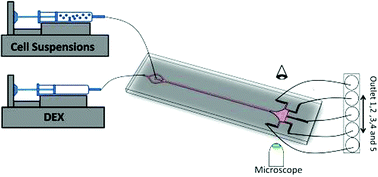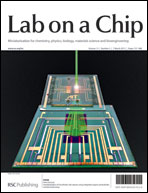Microfluidic inertia enhanced phase partitioning for enriching nucleated cell populations in blood
Abstract
Nucleated cells in blood like white blood cells (WBCs) and other rare cells including peripheral blood stem cells (PBSCs) and circulating tumor cells (CTCs) possess significant value for patient monitoring and clinical diagnosis. Enrichment of nucleated cells from contaminating red blood cells (RBCs) using label-free techniques without the use of antibodies or


 Please wait while we load your content...
Please wait while we load your content...